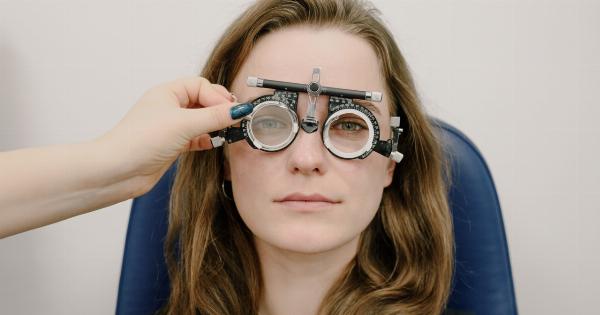When it comes to healthcare, the patient-doctor relationship is paramount. A strong partnership between the patient and their physician is crucial for successful treatment outcomes.
This collaborative approach not only enhances communication and trust but also promotes shared decision-making and patient engagement. In this article, we will explore the reasons why a strong patient-doctor partnership is vital and how it can positively impact treatment results.
1. Effective Communication
Open and effective communication is the foundation of any successful patient-doctor partnership. It is essential for both parties to actively listen and clearly express their thoughts, concerns, and treatment goals.
When patients feel comfortable sharing their symptoms and medical history, doctors can make accurate diagnoses and tailor treatment plans accordingly. Moreover, physicians who take the time to explain medical information and treatment options in an easily understandable manner empower patients to actively participate in their own healthcare decisions.
2. Trust and Confidence
A strong patient-doctor partnership is built on trust and confidence. Patients need to have confidence in their doctors’ expertise and judgment, knowing that their healthcare provider has their best interests at heart.
Trust allows patients to disclose sensitive information, follow medical advice, and adhere to treatment plans. On the other hand, doctors must trust their patients to be honest about their symptoms, lifestyle choices, and medication adherence.
Mutual trust fosters a positive and collaborative environment where patients feel empowered to actively participate in their treatment journey.
3. Shared Decision-Making
Gone are the days of a paternalistic approach to medicine, where doctors made all the decisions without involving the patient. Today, shared decision-making has emerged as a key component of effective healthcare.
In a strong patient-doctor partnership, both parties work together to determine the most appropriate treatment plan based on the patient’s preferences, values, and medical condition. By considering the patient’s unique circumstances, shared decision-making promotes treatment adherence and improves patient satisfaction.
4. Holistic Perspective
A strong patient-doctor partnership takes into account the patient’s overall well-being.
Rather than focusing solely on the presenting symptoms, doctors in a collaborative partnership consider the patient’s physical, emotional, and social factors. This holistic approach allows for a comprehensive understanding of the patient’s health and enables physicians to provide tailored treatment plans that address all aspects of the patient’s life.
By considering the broader context, doctors can optimize treatment outcomes and improve quality of life.
5. Enhanced Patient Engagement
Active patient engagement is a crucial component of successful treatment.
When patients feel involved and engaged in their healthcare, they are more likely to adhere to treatment plans, participate in preventive measures, and follow lifestyle modifications. A strong patient-doctor partnership encourages patients to take ownership of their health, promoting a proactive approach to illness management.
This increased engagement allows patients to better manage chronic conditions, experience improved treatment outcomes, and make informed decisions about their health.
6. Continuity of Care
A strong patient-doctor partnership ensures continuity of care. By establishing a long-term relationship, both the patient and doctor develop a deep understanding of the patient’s medical history, preferences, and treatment responses.
This knowledge allows physicians to make more accurate diagnoses and choose appropriate treatment options based on the patient’s unique circumstances. Continuity of care reduces healthcare fragmentation, minimizes unnecessary testing and treatments, and promotes better long-term outcomes.
7. Personalized Treatment Plans
In a strong patient-doctor partnership, treatment plans are personalized to meet the individual needs of the patient. Physicians consider not only the medical condition but also the patient’s lifestyle, values, and treatment preferences.
By involving patients in the decision-making process, doctors can create treatment plans that are more acceptable and feasible for the patient. Personalized treatment plans improve adherence, minimize side effects, and increase the chances of successful treatment outcomes.
8. Empathy and Emotional Support
A compassionate and empathetic approach is crucial in fostering a strong patient-doctor partnership. Patients often experience fear, anxiety, and uncertainty when faced with a medical condition or treatment.
Doctors who show empathy and provide emotional support create a safe and comfortable environment for patients to discuss their concerns openly. Emotional support not only enhances patient satisfaction but also improves treatment outcomes by reducing stress and promoting overall well-being.
9. Effective Patient Education
A successful treatment journey involves educating patients about their conditions and treatment options. In a strong patient-doctor partnership, physicians prioritize patient education and provide information in a clear and accessible manner.
When patients understand their conditions and treatment plans, they can actively participate in decision-making, ask relevant questions, and make informed choices. Effective patient education empowers individuals to take control of their health and actively engage in their treatment process.
10. Improved Patient Satisfaction
A strong patient-doctor partnership leads to improved patient satisfaction. Patients who feel heard, respected, and actively involved in their treatment journey are more likely to have a positive care experience.
When patients are satisfied with their healthcare, they are more likely to follow treatment plans, attend follow-up appointments, and recommend their physician to others. In contrast, a weak patient-doctor partnership can lead to dissatisfaction, mistrust, and reduced treatment adherence.
Conclusion
A strong patient-doctor partnership is the cornerstone of successful treatment outcomes. Effective communication, trust, shared decision-making, and personalized care are just a few of the benefits of this collaborative approach.
By fostering a partnership based on empathy, respect, and active engagement, healthcare providers and patients can work together to achieve optimal health outcomes. Investing in a strong patient-doctor partnership is an investment in improved treatment efficacy, patient satisfaction, and overall well-being.































